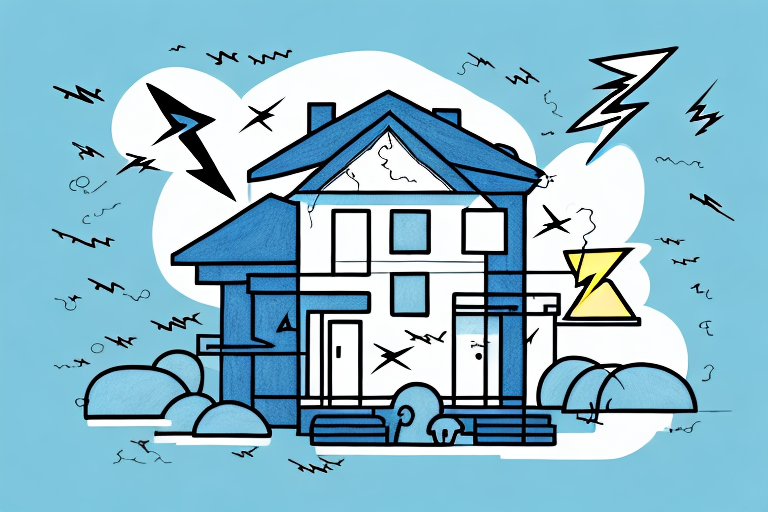Understanding Residential Surcharges
As a residential consumer of utilities, you may have noticed an additional charge on your bill labeled as a residential surcharge. This extra fee can make up a significant portion of your overall utility cost and is often a source of confusion and frustration for many customers. In this article, we'll explore the details and implications of residential surcharges, so that you can better understand why they exist, how they are calculated, and ways to reduce their impact on your utility bills.
Why Do Utility Companies Charge a Residential Surcharge?
Utility companies provide essential services like electricity, water, and gas to millions of residential and commercial customers across the country. To ensure reliable and consistent service, these companies must maintain a complex infrastructure of power lines, pipelines, and facilities that require significant investment and ongoing maintenance. Additionally, they must comply with various regulatory frameworks that govern safety, environmental protection, and service quality.
Utility companies are allowed to recover their costs and earn a reasonable return on investment through the rates they charge to their customers. However, the cost of providing service to residential customers is often higher than the cost to serve commercial customers. Residential customers typically consume less energy or water than commercial customers but require more infrastructure per customer to deliver the service. This means that utility companies must charge higher rates for residential customers to cover their costs and earn a fair profit.
In some cases, a separate residential surcharge may be added to the base rate for utility services to cover the additional cost of serving residential customers. This surcharge is designed to ensure that the cost of providing service to residential customers is not unfairly passed on to commercial customers or other utility ratepayers.
Another reason why utility companies may charge a residential surcharge is to encourage energy conservation and efficiency. By adding a surcharge to the base rate for residential customers, utility companies can incentivize customers to reduce their energy consumption and adopt more energy-efficient practices. This can help to reduce the overall demand for energy and lower the cost of providing service to all customers.
The Difference Between Residential and Commercial Surcharges
While the residential surcharge is designed to cover the additional costs of serving residential customers, commercial customers may also be subject to a surcharge. The commercial surcharge is typically lower than the residential surcharge because commercial customers use more energy or water and require less infrastructure per customer. Additionally, commercial customers may be subject to other charges for demand response or other specialized services that are not available to residential customers.
It is important to note that the calculation of surcharges for both residential and commercial customers varies depending on the utility company and state regulations. Some utility companies may use a flat rate for surcharges, while others may use a percentage of the total bill. Additionally, some states may have caps on the amount of surcharges that can be applied to a customer's bill.
Another factor that can affect the surcharges for both residential and commercial customers is the type of energy or water source being used. For example, customers who use renewable energy sources may be eligible for lower surcharges or even exemptions from surcharges altogether. This is because renewable energy sources typically have lower environmental impacts and require less infrastructure to deliver to customers.
How Utility Companies Use the Revenue from Residential Surcharges
The revenue generated from residential surcharges is used by utility companies to cover the additional cost of serving residential customers and to earn a reasonable return on investment. This revenue may be used to fund infrastructure upgrades, maintenance, or other capital projects that are necessary to ensure reliable and safe service. Additionally, the revenue may be used to pay dividends to shareholders or to invest in research and development of new technologies.
The Role of Government in Regulating Residential Surcharges
Government agencies at the local, state, and federal levels play a significant role in regulating residential surcharges. These agencies are responsible for ensuring that utility companies charge fair and reasonable rates to their customers and comply with various safety, environmental, and service quality regulations. Additionally, these agencies may conduct periodic reviews or investigations into utility rates and surcharges to ensure that they are not unfairly burdening ratepayers.
Impact on Your Utility Bill
The Impact of the Residential Surcharge on Your Utility Bill
The residential surcharge can have a significant impact on the total cost of your utility bill, especially if you use a lot of electricity, water, or gas. In some cases, the surcharge may account for up to 20% of the total bill. The actual amount of the surcharge will vary depending on your location, the utility company you use, and your level of consumption.
It's important to note that the residential surcharge is not the same as taxes, fees, or other charges that may be added to your utility bill. These other charges are often imposed by local or state governments and are used to fund various public services or infrastructure projects.
Real-World Examples of How the Residential Surcharge Affects Consumers
- In Hawaii, the residential surcharge for electricity can be as high as $30 per month, which can account for up to 25% of a typical customer's bill.
- In California, the residential surcharge for water can range from $4 to $10 per month, depending on consumption level and location.
- In Virginia, the residential surcharge for gas can be as high as 5% of a customer's bill, depending on the utility provider.
Calculating Your Residential Surcharge
How to Calculate Your Residential Surcharge
The methodology for calculating residential surcharges varies by utility company and state. Generally, the surcharge is based on a customer's usage of the utility service. This means that the more you use, the higher your surcharge will be. Additionally, the surcharge may be set as a fixed charge per billing cycle or as a variable rate that changes depending on your usage level.
To get an accurate idea of how your residential surcharge is calculated, you should review your utility bill and the accompanying rate tariff. This document should explain how the surcharge is calculated and any adjustments that may be made based on time of use or other factors.
Reducing Your Residential Surcharge
Ways to Reduce Your Residential Surcharge
- Reduce your overall consumption of energy or water by turning off lights, using efficient appliances, or taking shorter showers.
- Participate in utility programs for time-of-use pricing or demand response to reduce your overall bill and potentially lower your surcharge.
- Explore alternative energy sources, such as solar panels or wind turbines. While the initial cost of installation may be high, these sources can provide long-term savings on your utility bill and reduce your reliance on traditional energy sources that may be subject to surcharges and price fluctuations.
Energy Conservation Tips
Implementing energy-efficient practices not only helps the environment but also reduces your utility bills. Consider the following tips:
- Install LED lighting throughout your home.
- Use programmable thermostats to better control heating and cooling.
- Seal windows and doors to prevent energy loss.
- Upgrade to energy-efficient appliances.
Common Myths and Misconceptions
Common Myths and Misconceptions About Residential Surcharges
- Myth: The residential surcharge is a tax. Reality: The residential surcharge is a fee charged by utility companies to cover the additional cost of serving residential customers.
- Myth: Residential customers pay a higher rate than commercial customers for the same service. Reality: The rate charged to residential and commercial customers is based on the cost of providing service to each customer group, which can differ significantly.
- Myth: The residential surcharge is a hidden fee that I can't avoid. Reality: The residential surcharge is disclosed on your utility bill and can be reduced by taking steps to reduce your overall consumption of utilities.
Contesting Your Residential Surcharge
How to Contest Your Residential Surcharge if You Think It's Unfair
If you believe that your residential surcharge is unfair or incorrect, you may be able to contest it with your utility company or regulatory agency. Follow these steps:
- Review Your Bill: Carefully examine your utility bill and the accompanying rate tariff to ensure that the surcharge is being calculated correctly.
- Gather Evidence: Collect any relevant documentation, such as previous bills, to support your claim.
- Contact Your Utility Provider: Reach out to your utility company’s customer service department to discuss your concerns.
- File a Complaint: If the issue isn't resolved, you can file a formal complaint with your state’s public utilities commission or regulatory agency.
- Seek Assistance: Consider contacting a consumer advocacy group for additional support and guidance.
Future Outlook
The Future of Residential Surcharges in the Utility Industry
The utility industry is facing significant challenges in the coming years, including a growing demand for renewable energy sources, changing consumer preferences, and new technologies that could disrupt traditional utility business models. As a result, the role and impact of residential surcharges may change over time. It's important to stay informed and engaged with your utility provider and regulatory agencies to understand how these changes may impact your bills and service quality.
How to Stay Informed About Changes in Your Residential Surcharge Rates
To stay informed about changes to your residential surcharge rates, you should regularly review your utility bill, rate tariff, and any notices or announcements from your utility provider or regulatory agency. Additionally, you can participate in utility programs or services that offer real-time usage tracking or alerts to help you manage your consumption and reduce your overall bill.
Conclusion
Understanding the residential surcharge is essential for all utility customers. While the surcharge may be an added cost, it is a necessary part of ensuring reliable and consistent service for residential customers. By taking steps to reduce your overall consumption and staying engaged with your utility provider and regulatory agencies, you can minimize the impact of the surcharge on your bills and help support a sustainable and efficient utility industry.




















